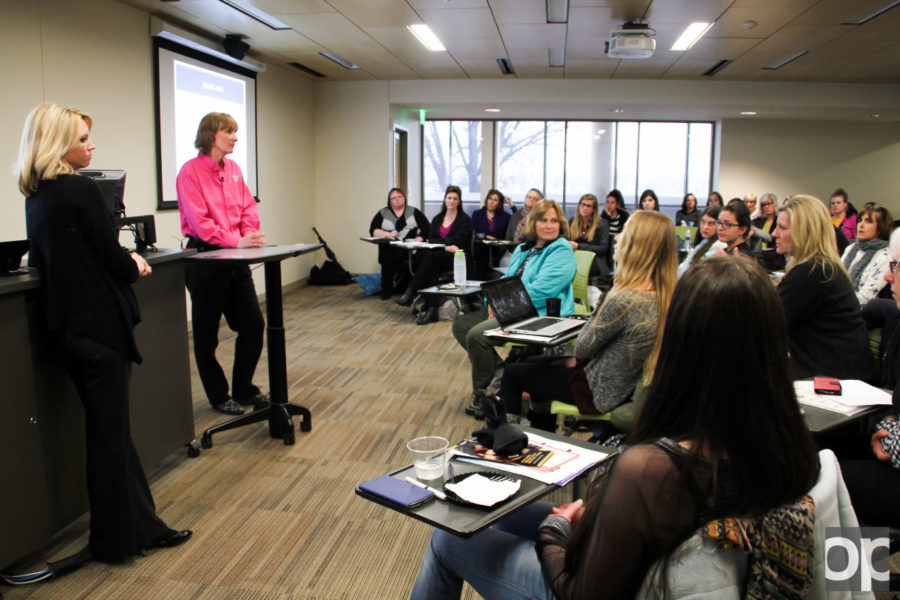Importance of listening to your dog discussed at Animal Welfare Lecture
Featured speaker, C.J. Bentley, a dog behavior consultant and instructor for Oakland University’s AAT-C program, talked to students about how to best incorporate animals into their therapy work.
The Center for Human Animal Interventions hosted an Animal Welfare Lecture on March 24. This discussion focused on animal welfare and how it applies to animal assisted therapy.
It was from 4-6 p.m. in the Human Health Building and was open to faculty, staff, students and the community.
The featured speaker was C.J. Bentley, a dog behavior consultant and instructor for Oakland University’s AAT-C program, which helps those interested in Animal Assisted Therapy (AAT) learn more about how to best incorporate animals into their therapy work.
She is also senior vice president for the Michigan Humane Society.
AAT utilizes the human-animal bond in goal-directed interventions. This may include pain relief, whether physical or mental, or providing temporary healing and focus.
Bentley said that in AAT, there is a triangle with three parts: the practitioner, the client or patient, and the animal. She made it clear that each has to carry equal weight.
Her main idea was how important it is for owners to know their dogs. For an interaction to be successful, owners need to read their dogs and see if they are comfortable. Just because the animal makes the owner happy doesn’t mean it wants to make others happy.
Tolerating it is not enough, and if the dog doesn’t enjoy it, it will eventually snap.
“A dog doesn’t bite for no reason. Unless there’s faulty wiring in the brain, there’s a reason why they lashed out,” Bentley said.
Dogs are incredibly inept at sensing when humans are upset, so it is a person’s job to figure out what the dogs are feeling.
She made the point that every animal is an individual. Qualities like breed, size and age do not necessarily mean anything.
Bentley also taught how to understand the signs of stress in dogs.
Body language is key and must be looked at as a whole. There are some key signs of stress that some may miss, such as lip licking or enlarged pupils.
She also gave the example of dogs that go “belly up,” laying on their back. A lot of people think that means they are comfortable and relaxed, but many times this is a scared dog showing it is not a threat.
Amy Johnson is the special projects coordinator and the director of the Center for Human Animal Interventions and Animal Assisted Therapy Certificate Program.
Johnson believes AAT is incredibly valuable.
“Animals have a way of reaching through where humans sometimes cannot. Social animals, most of them are genuine, show unconditional love and do not judge,” she said. “There is a disarming way about them that allows the patient or client to be vulnerable, which is required for the work to begin.”
Overall, Bentley hoped this lecture was informative to attendees.
“Communication with your pet is a two-way street. Know what your pet is telling you, so you can help him or her be the very best they can be,” she said.
The Center for Human Animal Interventions is in the School of Nursing and is a part of Professional and Continuing Education (PACE), according to the center’s website.
Bentley wants people to know that while this is a great field, it isn’t for everyone.
“AAT is truly amazing and can have such a positive, life-long impact. It is, though, not to be entered into lightly,” she said. “Set your goals and listen to your animal partner, then everyone will benefit.”








